Beetles in bamboo forests: community structure in a heterogeneous landscape of southwestern Amazonia
- PMID: 30002980
- PMCID: PMC6034595
- DOI: 10.7717/peerj.5153
Beetles in bamboo forests: community structure in a heterogeneous landscape of southwestern Amazonia
Abstract
Amazonian bamboo forests dominated by large woody bamboo plants in the genus Guadua cover approximately 180,000 km2 and represent a key resource for many organisms. In southwestern Amazonia, native bamboo forests differ in structure, biodiversity, and growth dynamics from other forest types in the region. However, with the exception of a few species in which habitat specialization or a strong habitat association has been demonstrated, little is known about how bamboo forests influence animal community structure. In an effort to understand more about the animal assemblages associated with Amazonian bamboo forests, we characterized the structure of ground-dwelling beetle assemblages living in bamboo forests and adjacent terra firme forests in a lowland rainforest site in Peru. We conducted intensive pitfall trap surveys in 13 bamboo habitat patches and 13 adjacent terra firme habitat patches to determine if there were differences in the abundance and richness of beetle species in these two habitat types. Additionally, given that southwestern Amazonia experiences distinct dry and wet seasons, we conducted our study during the dry and wet season of one year to account for differences in seasonality. We found a distinct beetle assemblage associated with each forest type, and identified a set of dominant species that significantly contributed to the distinctness in beetle community structure between bamboo and terra firme forest. The terra firme forest had a greater number of rare species than the bamboo forest. Several beetle species exhibited a strong association with the bamboo forest, including a large species of Scarabaeidae that appears to be specializing on bamboo. We also found marked differences in beetle assemblages between dry and wet seasons. Our results support the prediction that beetle community structure in bamboo forest differs from that of terra firme in terms of species richness, abundance, and composition. Bamboo-associated animal communities require more exploration and study, and must be included in regional conservation plans seeking to protect entire animal communities in southwestern Amazonia.
Keywords: Biodiversity; Coleoptera; Guadua bamboo; Pitfall traps; Terra firme.
Conflict of interest statement
The authors declare there are no competing interests.
Figures




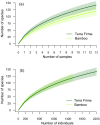
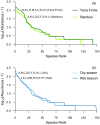

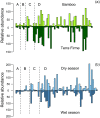
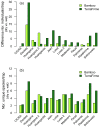
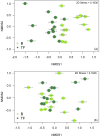

Similar articles
-
Composition of terrestrial mammal assemblages and their habitat use in unflooded and flooded blackwater forests in the Central Amazon.PeerJ. 2022 Dec 12;10:e14374. doi: 10.7717/peerj.14374. eCollection 2022. PeerJ. 2022. PMID: 36530392 Free PMC article.
-
Primate assemblage structure in Amazonian flooded and unflooded forests.Am J Primatol. 2005 Oct;67(2):243-58. doi: 10.1002/ajp.20180. Am J Primatol. 2005. PMID: 16229024
-
Seasonality in the dung beetle community in a Brazilian tropical dry forest: Do small changes make a difference?J Insect Sci. 2014;14:123. doi: 10.1093/jis/14.1.123. J Insect Sci. 2014. PMID: 25368067 Free PMC article.
-
Tadpoles of Central Amazonia (Amphibia: Anura).Zootaxa. 2022 Dec 28;5223(1):1-149. doi: 10.11646/zootaxa.5223.1.1. Zootaxa. 2022. PMID: 37044499 Review.
-
The Bamboo Flowering Cycle Sheds Light on Flowering Diversity.Front Plant Sci. 2020 Apr 17;11:381. doi: 10.3389/fpls.2020.00381. eCollection 2020. Front Plant Sci. 2020. PMID: 32362903 Free PMC article. Review.
References
-
- Anderson RS. A review of the Neotropical genus Eucalandra Faust, 1899 (Coleoptera; Curculionidae: Dryophthorinae) Zootaxa. 2008;1791:57–67.
-
- Baker SC, Barmuta LA. Evaluating spatial autocorrelation and depletion in pitfall-trap studies of environmental gradients. Journal of Insect Conservation. 2006;10:269–276. doi: 10.1007/s10841-006-0016-8. - DOI
Grants and funding
LinkOut - more resources
Full Text Sources
Other Literature Sources

